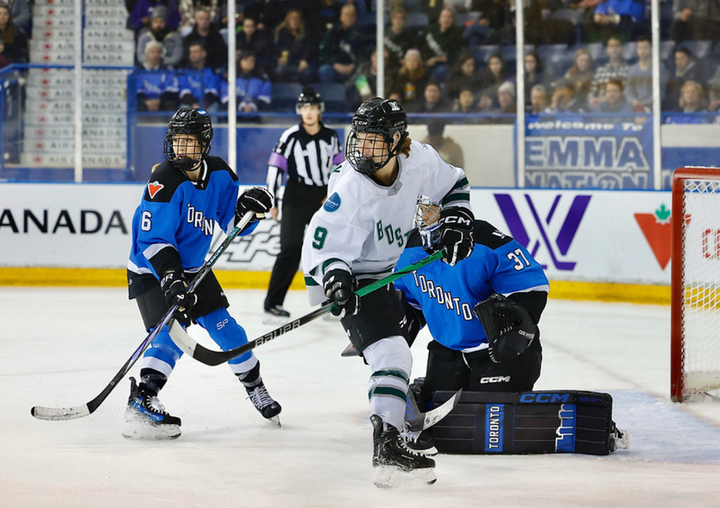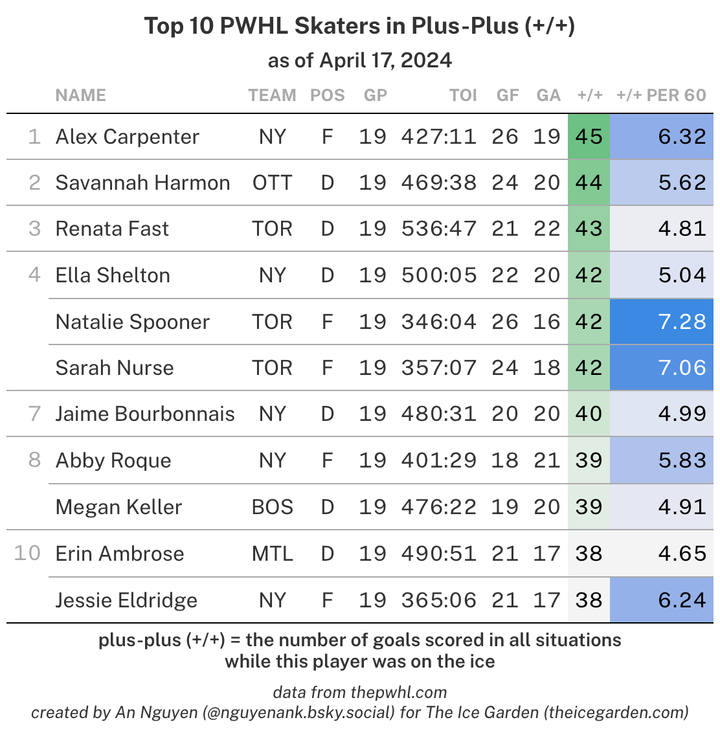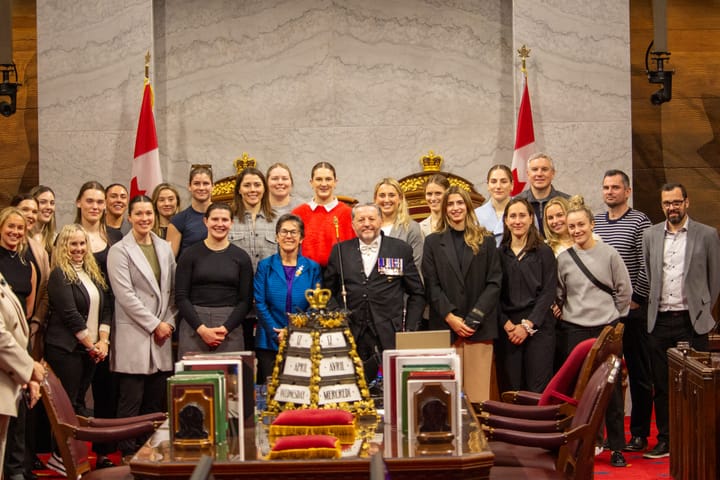Toronto’s first period troubles are solved by second period strengths
In 2021-22, the Toronto Six have won and lost games almost exclusively in the second period
If you want to know how the Toronto Six are going to finish a hockey game, you’d do well to pay particular attention to the second period. In the first half of the season, more often than not, if the Six find a way to win the second, they find a way to win the whole game.
The Toronto Six have scoring threats up and down the roster. When it comes to offense, they’re absolutely dominant. In 13 games, they’ve scored 48 goals. They sit at the top of the PHF when it comes to goal differential and goals per game. Of those league-leading 48 goals, 25 have been scored in the second period.
If you didn’t know any better, you might think they were lulling their opponents into a false sense of defensive security before unleashing their true might just in time to pull off the win.
“I’m not sure what it is, our starts are a little shaky, but our second periods are off the charts,” head coach Mark Joslin said after Toronto’s 8-3 win over the Buffalo Beauts on January 16.
After falling behind 3-2 in the first period, the Six headed to the dressing room. Less than two minutes into the second, they had regained the lead and would carry on to score three more goals for a second period total of five.
In their next game, just a little under a month later on February 12, they would again be carried to victory by a high scoring second period. The Whitecaps scored first thanks to Allie Thunstrom doing things that only Allie Thunstrom can really do, and despite getting 17 shots off to Minnesota’s 13, they failed to score in the first frame of play. Again, they would come back from the first intermission as if nothing had happened. It was once again, an early second period goal that got the Six going, as Natalie Marcuzzi scored her first PHF goal at 2:23. Three more goals sealed the deal and the Six skated off to the tune of a 6-2 victory.
It’s not just offense that the Six do particularly well in the second, they’ve limited opponents to 0.5 second period goals per game. The only time they’ve allowed more than a single goal in the second was on December 5 in their only regulation loss of the season so far.
So what makes the difference? What do you tell a high-scoring team to get them to score? It might not be exactly what you’d expect.
Coaches Mark Joslin and Angela James have been fairly consistent when it comes to what they want the team to do; slow down.
It seems counterintuitive at first, but it’s clear that the Six play better when they’re taking their time, thinking things through, and slowing the game down. That doesn’t mean they won’t come out and score four goals in three minutes, on the contrary, it’s when they slow down that the floodgates seem to open and they start to fill up the scoresheet.
Joslin and James stress communication as one of the most important things players can do on the ice. Again, the players visibly improve in this area in the second period. It shows in less obvious ways, players call for passes more often, and in turn, those passes connect, turnovers go down, possession time goes up. When it comes to shots, slowing down means that more shooting and passing open up in front of the net. The quantity of shots that the Six get on net may not always increase in the second period, but the quality of their chances almost always does.
Being so dominant offensively has frequently put the Six in a position to limit their opponents’ scoring chances. The Whitecaps recorded just six shots in the second period to Toronto’s 16 on February 12. The next day the Six took another victory, this time by a score of 2-1. Though they outshot the ‘caps over all three periods, it wasn’t nearly as decisive as the day before.
Neither the players nor the coaching staff seem to be afraid to make adjustments as necessary. If a line isn’t working out in the first period, in all likelihood, it’s going to be different by the second. When backup goaltender Tera Hofmann wasn’t getting the support she needed from the players in front of her in that game on January 16 against the Beauts, she was swiftly pulled. Not because she wasn’t good enough, but to send a message to the other players, that they needed to slow down. Not only did the Six score five goals, they held the Beauts to just four shots, and by the time Hofmann was back between the pipes for the third, they were playing a different kind of hockey game.
“We definitely didn’t get the start we wanted to, we came up flat,” said Captain Shiann Darkangelo after the win, “We were kind of just sitting back so we just regrouped in the locker room and I think everybody looked at themselves to see what they could do better and we came out strong, scored two goals in the first two minutes of the second period, so I think that set the tone.”
First period slumps, it would seem, have been overcome. It’s the second period where the Toronto Six make or break their game. Their worst loss of the season, by far, was handed to them by the Boston Pride on December 5. The Six were outshot and outplayed by the Pride, but they didn’t lose the game until Boston took control of the second. They tried to play catch-up and it didn’t work, they played the game at Boston’s speed instead of their own.
The Six will play Buffalo on Monday, February 21 in a special outdoor game. It’s the last time the two teams will face each other in the regular season. The game’s supposed to start at 3:00 p.m., so be ready for the Six to really get started some time around 3:45.





Comments ()